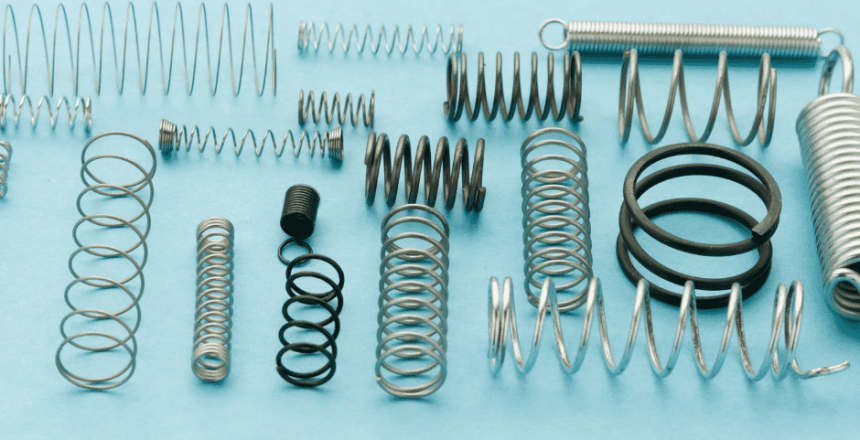Spring Materials
Specific spring materials are tailored for their specific applications. You would not use the type of spring found in a ball point pen in an automotive application. Once you learn the different spring materials available, you can start making the best choice for your desired application.
How to Choose the Right Spring Material
Knowing what material to use for your spring depends on its future application.
Many factors will affect the performance and longevity of a spring, including temperature, weight, and corrosion. Springs are expected to be used countless times over their life cycle, and the material chosen needs to withstand the expected wear and tear.
1. Stainless Steel
One of the most common materials used in springs is stainless steel. Stainless steel is a cold drawn, general-purpose wire that is both heat and corrosion resistant. It is offered in different grades that provide varying properties depending on your specific needs. Some stainless steels can be strongly magnetic, have poor electrical conductivity, or have high tensile strength.
Ultimately, stainless steel is a popular and versatile alloy.
2. High Carbon Steel
High carbon steel is the most commonly used material for springs. Its properties allow it to offer great hardness and resistance levels, and it can withstand plenty of wear and tear. High carbon steels are also available at lower costs and are ideal for low stress applications.
3. Nickel Alloy
Nickel alloy is ideal for intense environments that require products with high levels of heat and corrosion resistance. Nickel alloy springs are the go-to option even for the most demanding environments. When stainless steel does not offer enough, cobalt-nickel alloy springs are the ones that many manufacturers choose.
4. Brass and Phosphor Bronze
Other less commonly used spring materials include brass and phosphor bronze. Although they are both copper alloys, they have different properties and are ideal for different applications.
Brass is valued for its malleability, machinability, and ability to retain its strength through manufacturing. It is highly water resistant, but is more expensive and may tarnish or change color over time.
Phosphor bronze is also a more expensive material, but because it is cold drawn it offers good resistance to corrosion and electrical conductivity. It is also bacteria resistant, making it an ideal metal for applications in the medical field.
How Mid-West Spring and Stamping Can Help
Whatever your application needs, Mid-West Spring and Stamping can help you find the right material for the job. As a premier custom springs manufacturer, we craft compression springs in a variety of compression types, shapes, and materials to your individual specifications.
Mid-West Spring and Stamping is committed to creating more value for our customers with fewer resources, through continuous improvement and the elimination of waste.
Want more information on the spring materials we offer? Contact a team member today!

